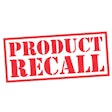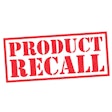Hound & Gatos Pet Foods Corp. has tips for pet owners to keep their pets safe and healthy amid petfood recalls.
“Most people are caring pet owners, and they want to what helps protect their pet,” said Will Post, founder and CEO, Hound & Gatos. “Yet the problem is that most are not sure what that means and how to go about it. The more they learn about petfood, the better able they will be able to make an informed decision that will keep their pet healthier and safer.”
Petfood recalls have become commonplace, with foods being recalled for Salmonella or Listeria contamination, presence of foreign materials, or other issues. Here are several tips that consumers may want to keep in mind when it comes to choosing a petfood that will help reduce the risks:
- Get to know the company. Most people may know a company name simply because they spend millions on advertising. But that doesn’t mean they know much about the company or their ethics. Research companies to find one that offers high standards, quality products, and great customer service. Then stick with that company for the long haul.
- Ask questions. Don’t be afraid to contact a petfood company and ask them where something was made, where ingredients came from, or any other questions. They should have no problem answering questions about their products, or with being able to provide proof of their quality standards.
- Read reviews. Do some searches to read some reviews about various brands of petfood. Keep in mind that some reviews can be biased and even planted by the company itself, so look for impartial third-party sources giving the review. Also, ask around to see what friends and family feed their pets.
- Investigate ingredients. The source of ingredients is of major concern when it comes to reducing the risks of petfood recalls and with keeping pets healthy. Many of the petfoods recalled contain ingredients that came from Asia, rather than all being 100 percent originating in the USA. Read the labels and ask questions to determine where the ingredients are coming from, and then opt for only products that are completely originating from the USA. For example, the FDA just approved chicken from China. Only three percent of petfoods get inspected, leaving a big window for risks.
- Understand petfoods. Cat and dog food should contain 100 percent protein, which will supply pets with the nutrients their bodies require. The problem with many commercial petfoods is that it is comprised of numerous fillers, such as generic liver, cheap fillers and grains.
“In order to keep pets safer and healthier, you can’t just pull any food off the shelf at the store,” Post said. “Many have generic ingredients and fillers that cats and dogs should not be eating. Get to know petfoods and the companies that manufacture it, and then stick with one that has a high level of standards and is ethical.”
















